Functional Tracks in Army Aviation
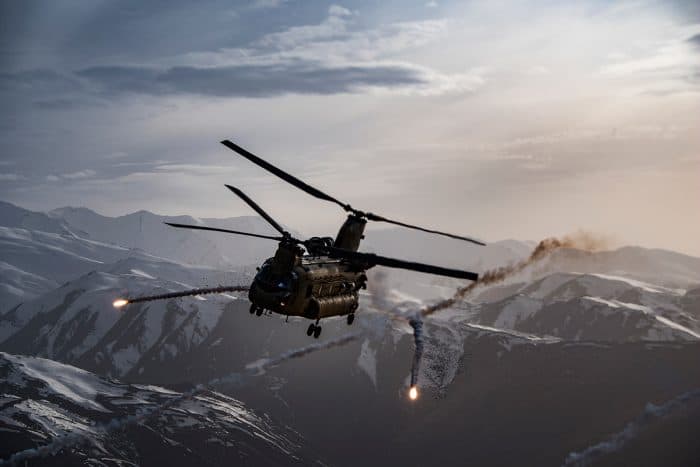
A few weeks ago, the “Flavors of Army Aviators” article briefly summarized the contents of this week’s. But the topic itself is broad enough – and important enough – to merit its very own, concentrated article. As a matter of fact, it’s broad enough and important enough in its implications for an aviator’s career that I’ll be splitting it into two articles. This way, hopefully, prospective pilots (or qualified-but-untracked pilots) are able to start charting their career-wish-lists with at least a decent foundation-of-knowledge to guide them. With this foundation should also come a relative understanding that enables one to do some self-study to find more information.
Before we dive too deeply into the Functional Tracks individually, it would certainly be worthwhile to reiterate their purpose in Army Aviation and the way the track program generally operates: 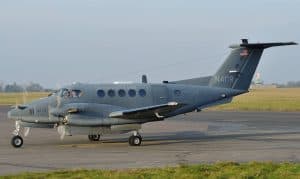
As was explained in the article about the Warrant and RLO career pathways, Functional Tracks are the cogs that make the metaphorical wheel of Army Aviation roll effectively in both combat- and training-environments. Each one, ultimately, supports the Commander (at whatever level) in developing, maintaining, updating and modifying Aviation programs to best suit the unit and its ability to effectively carry out and complete its mission. As such, given that Warrant Officers are the experts of their given trade, the true emphasis for becoming “tracked,” (meaning specializing in one of these functional areas) falls squarely on the WOs’ shoulders. RLOs can absolutely track as well (and are even encouraged to, especially in the Guard), but their given career path means that their entire focus CANNOT be on any specific functional role. Rather, it MUST be broadly smeared over all of them.
Selecting a Track does not happen during flight school or upon arriving at your unit. It happens once an Aviator has attained Pilot-in-Command (PC) status – which will also most often happen slightly earlier for WOs than for RLOs. This is because, upon arriving at a unit, a WOs entire focus – their daily breath – is given to becoming an expert at piloting their given aircraft. A young LT, on the other hand, will be learning property accountability, the unit maintenance program, the unit training program AND how to be a good pilot along with other Army administrative necessities. I keep emphasizing these differences to cement the notion that, although RLOs can attend Track courses, a RLO will never serve in the role of a “track lead/head” (SP, ASO, etc.). For a WO, however, a functional track becomes their favorite aspect of Army Aviation and the one to which they devote most of their time. They are the ones that must have all of the answers to all of the questions – or at least know where to find them.
So deciding what Track to pursue is important. It becomes a key cog in a WO’s career. And allows for a more in-depth understanding of an aspect of Army Aviation for a RLO. Take time to get to know all of them upon arriving at your unit so that you can consider which track would genuinely be satisfying for you, personally, to throw yourself into. As for this moment, enjoy this introduction to the Functional Tracks in Army Aviation:
Table of Contents
- Aviation Safety Officer (ASO)
- Instructor Pilot/Standardization Officer (IP/SP)
- Aviation Mission Survivability Officer (AMSO)
- Next Week…
Aviation Safety Officer (ASO)
There’s a relatively common saying within Army Aviation, mostly tongue-in-cheek (MOSTLY), that “Safety is the speed bump to success.” This isn’t a dig at the concept of being safe, rather, it’s a dig at the Safety track. Because if a Safety Officer is good at their job, they will ask a lot of questions – many of them hard ones – about operational practices and procedures. They will slow everything and everyone down if they recognize the signs and symptoms that lead inevitably towards an incident. In this regard, they can frustrate planners and doers who “just want to get the job done.” But Safety Officers are the keepers of the Commander’s Safety Program. As such, they represent the best intentions of any good Commander, who will believe that no job is worth rushing into haphazardly and potentially harming soldiers by utterly preventable means.
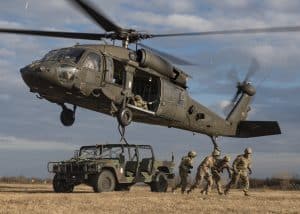 Another common phrase one will hear upon entering the Army as a whole is “Every soldier’s a Safety Officer.” The meaning of this should be readily apparent: it’s everyone’s responsibility to ensure that they and those around them are performing their tasks in as safe a manner as circumstances and mission demands allow (read: the safest manner possible). The notion is absolutely correct, but even among a tribe of the most safety-minded soldiers, without specific training in recognizing problems before they arise, things would inevitably be missed. In order to further reduce risks to the safety of soldiers, the Army created its Safety Programs and developed the Safety Officer position. Obviously, combat and training/preparing for combat are variable animals, so eliminating all risk is an impossibility. But with a good Safety Officer and a Command climate that stresses the importance of working and training safely, a unit is able to establish an incredibly safe environment without a real reduction in productivity or efficiency.
Another common phrase one will hear upon entering the Army as a whole is “Every soldier’s a Safety Officer.” The meaning of this should be readily apparent: it’s everyone’s responsibility to ensure that they and those around them are performing their tasks in as safe a manner as circumstances and mission demands allow (read: the safest manner possible). The notion is absolutely correct, but even among a tribe of the most safety-minded soldiers, without specific training in recognizing problems before they arise, things would inevitably be missed. In order to further reduce risks to the safety of soldiers, the Army created its Safety Programs and developed the Safety Officer position. Obviously, combat and training/preparing for combat are variable animals, so eliminating all risk is an impossibility. But with a good Safety Officer and a Command climate that stresses the importance of working and training safely, a unit is able to establish an incredibly safe environment without a real reduction in productivity or efficiency.
All of that is to say “Safety is important.” I would hope people wouldn’t try to state otherwise, but emphasis breeds memory.
The training itself, the Aviation Safety Officer Course (ASOC…the Army gets pretty imaginative when naming things) is a six-week resident course at Fort Rucker. This is regardless of airframe, as the Aviation and Ground Safety Programs in the Army are entirely independent of specific aircraft. This course, however, covers only the very fundamental aspects of administering an Aviation Safety Program. It’s upon completion of this course that doors are opened for more specific and, ultimately, more lucrative training programs. Just completion of ASOC earns a graduate American National Standards Institute (ANSI) Professional Accreditations in both Aviation and Ground Safety, for instance. I state this specifically with respect to the opportunities that become available to trained Safety Officers upon exiting the Army (or if seeking full-time employment while in the Guard or Reserves).
Once trained and acting in the role of Safety Officer at the unit, the ASO will work in the administrative tasks of assisting the Commander in developing Safety policy, goals, objectives and the corrective actions associated therewith. They will ideally float around the unit assessing safety issues and developing solutions therefor. But the ASO’s job does not exist solely in the realm of administration. Safety Officers are also the ideal individuals to fly out and assess the suitability of tactical locales such as Forward Arming and Refueling Points (FARPs), newly-designated landing areas and Tactical Assembly Areas (TAAs). 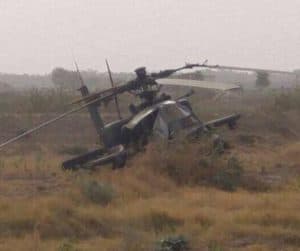
Importantly, ASO’s will also be involved in Accident Investigations, whether Aviation or Ground. These investigations cement the importance of their jobs into their minds. A Safety Officer who has been doing the job long enough will generally be filled with the kind of fervor for their work that only such a tragic task can supply. As emphasized multiple times above, Safety is important. And it should be non-negotiable. Thus, being detail-oriented and meticulous in your work are key factors for someone intending to enter the Safety track.
For any interested parties, a more comprehensive list of tasks that fall under the ASO’s purview, along with more information about the Safety Programs as whole, can be found in DA PAM 385-90 (Army Aviation Accident Prevention Program). It is an absolute wealth of information (though, fair warning, also a typically-dull Army-read).
Instructor Pilot/Standardization Officer (IP/SP)
The very general scope of the Instructor Pilot’s job is probably one with which most readers are familiar or, failing that, most could at least take an accurate stab at. And you’d be, broadly, correct. Instructor Pilots teach in the aircraft. And out. And, in the case of some, at literally every conceivable (sometimes even inconceivable) opportunity. And when they aren’t teaching, they’re studying. They are the unequaled masters of the practical application of their airframes in both tactical and non-tactical environments. It is the Instructor Pilot’s job to ensure that the aviators in their unit are capable and practiced at accomplishing whatever tasks are necessary to complete their mission and return home safely.
The Aircrew Training Manual (ATM) and the -10 (Operator’s Manual) will be the foundational-, hobby- and toilet-reading for an IP (as, frankly, they should be for student pilots and pilots in Readiness Level (RL) progression once they arrive at their units). Given the primary task of an IP, a cool head and confident know-how are utterly crucial to success. Instructor Pilots will often get put into situations by the pilots with whom they’re flying that are, in a word, uncomfortable. The reality is that not all pilots who graduate flight school are capable in the aircraft. Furthermore, even experienced and capable pilots can have a bad day during an Annual Proficiency and Readiness Test (APART), whether it’s due to nerves or any other numbers of factors. So having both the confidence AND the ability to make an unsafe situation in the aircraft safe is crucial. And I feel like it goes without saying…but I’ll say it anyways: no small amount of patience is also crucial. Every Aviator in the Army has dealt with IPs who are on both ends of the spectrum of patient instruction. I doubt there’s a one who has had a good experience with an IP who lacks patience. It makes for an uncomfortable, annoying and often downright hostile cockpit. This is not a winning combination.
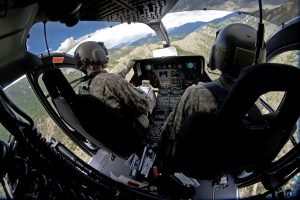 The Instructor Pilot Course (IPC) varies in length depending on the airframe in which the pilot will become an IP. But there are many aspects of the job that are not aircraft-dependent, most of them administrative. As an IP gains in seniority they can attend further training to become an Instrument Flight Examiner and/or a Master Gunner. Eventually, an IP can become a Standardization Officer (or Standardization Pilot/SP) in a Company or Troop (CO), then a Battalion or Squadron (BN), then a Brigade (BDE). The SP is the chief technical and tactical advisor to the Commander and the individual who primarily runs/oversees the Commander’s Aircrew Training Program. In this, they are part of the Command Team at their respective level (CO, BN, etc).
The Instructor Pilot Course (IPC) varies in length depending on the airframe in which the pilot will become an IP. But there are many aspects of the job that are not aircraft-dependent, most of them administrative. As an IP gains in seniority they can attend further training to become an Instrument Flight Examiner and/or a Master Gunner. Eventually, an IP can become a Standardization Officer (or Standardization Pilot/SP) in a Company or Troop (CO), then a Battalion or Squadron (BN), then a Brigade (BDE). The SP is the chief technical and tactical advisor to the Commander and the individual who primarily runs/oversees the Commander’s Aircrew Training Program. In this, they are part of the Command Team at their respective level (CO, BN, etc).
Given this information, it should be clear just how crucial the SP and the IPs are in the function of an aviation unit in the Army. Without them, there is absolutely no mission capability and, thus, no mission accomplishment. Without them, an aviation unit is utterly moot.
One last note: SP/IPs are most often the pilots that finish their Army careers with absolutely prodigious flight hours. Because of all of the time they spend flying junior aviators, conducting APARTs and generally running the Commander’s Aviation Training Program, they spend a lot of time at the controls. Flying is literally the bread and butter of their job. It adds up. Quickly. So for the individual wanting to fly, fly, fly… And as long as there are humans flying, there will be a need for experienced and qualified Instructor Pilots in both the public and private sectors.
Aviation Mission Survivability Officer (AMSO)
During peacetime and in the garrison environment, these guys will often be given crap by other pilots. They’re the nerds. They get excited about detection ranges, floors, the IR spectrum and other things that generally don’t affect a crew going out to burn a couple bags of gas for a standard training flight (called Continuation Flights). But in a real fight (or in a training fight, like a Combat Training Center rotation), the words they speak suddenly become horribly interesting. Something along the lines of, “So what you’re saying could very well keep me from flying straight into a missile? Or could get me picked up by good guys if I were to get shot down? Then by all means, go on…”
AMSOs are the experts in mission analysis, tactical employment of the aircraft and its systems to maximize weapons effect while minimizing enemy capabilities AGAINST the friendly aircraft. They’re also the experts on Personnel Recovery which, as you can imagine, is a popular topic for pilots who must face the very real possibility of a shoot-down in the bush. AMSOs will, additionally, often serve in an advisory role to the supported Ground Force Commander so that they understand both the how and the why of aviation implementation into the greater scheme of maneuver. 
Much like with Safety, the initial training to become an AMSO is a roughly six-week course with this being very much just the introduction into the field of Aviation Mission Survivability. The opportunities to attend follow-on training, conferences and more will be plentiful. Furthermore, AMSOs will generally be privileged to get their mitts on that treasured Top Secret Clearance. Which is a commodity that’s, admittedly, much more rare among the ranks of Army Aviators than our Air Force comrades. This is because AMSOs, for obvious reasons, need to be closer to the cutting-edge of available information in order to accurately and effectively apply their analyses into mission planning.
The field of Mission Survivability in Aviation is also a drastically-changing topic, as the Army continues to shift its focus from the Counter-Insurgency (COIN) conflicts of the past two decades, where threat to aviation was relatively low, to the Large-Scale Combat Operations of hopefully never where the threat to aviation assets will be immense. As such, the role of the AMSO has become even more important – as if not getting shot down was ever NOT important – and, particularly for combat or the combat-training environment, utterly critical. A prospective AMSO needs to be the studious type. An insatiable appetite for information and an ability to retain it all and relay it in a way that’s digestible to all of the non-AMSO types within the unit are essential qualities. A good AMSO can make the life of their Commander, along with every other pilot in their unit, more comfortable by degrees.
Leading into next week…
The general trend you’re seeing is that every one of these tracks is important and essential to the effective combat application of a unit and in the ability of a Commander to do their job. It’s almost as if it was designed that way… Next week we’ll close out the lecture on Functional Tracks. For those who lack the patience to wait that long (who should DEFINITELY not consider becoming IPs), this document can give you a glimpse into functional tracks along with the general outline of an Army Aviator’s career.
‘Til then!







